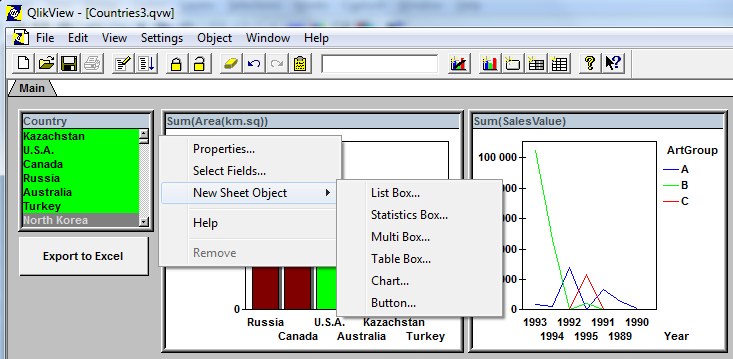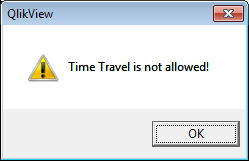Unlock a world of possibilities! Login now and discover the exclusive benefits awaiting you.
- Qlik Community
- :
- Discover
- :
- Blogs
- :
- Product
- :
- Design
- :
- A Historical Odyssey: QlikView 3
- Subscribe to RSS Feed
- Mark as New
- Mark as Read
- Bookmark
- Subscribe
- Printer Friendly Page
- Report Inappropriate Content
Oh, glorious were the days! Businesswise we were perhaps not yet so successful, but product maturity made giant leaps forward. QlikView 3 was a very good product packed with new features that made life easier. Both developers and users loved it. It was easier for prospects to evaluate it and it was easier for us to sell than previous versions.
QlikView 3 was released in the spring of 1997, in time for the yearly IT exhibition CeBIT in Hannover. In version 1 and 2 we had focused on the UI (user interface) – on presenting data in such a way that a user could explore it and learn from it. For QlikView 3, we had changed focus slightly. We now worked more on simplifying the data loading process and the development of the document. We also made it easier for people to try out the product by introducing a 15-day evaluation license. As a result, more and more people started developing applications with QlikView. And it became much easier to convince prospects and partners to join us on our journey.

One major change in QlikView 3 was the Automatic Outer Join. Already in QlikView 1 and 2, you could have a data model with several tables. But the associations between the tables were like inner joins and no analysis was possible for values that lacked corresponding records in a neighboring table. For instance, customers that had no orders in the Orders table were always grayed out. But with QlikView 3 it became possible to select such customers. This is a feature that we today take for granted, but it was not there in the beginning.
Another change in QlikView 3 was that the scripting language developed immensely. We introduced a number of new script constructs. Join, Concatenate, Crosstable, Intervalmatch, resident load, preceding load, Group by, Peek, Previous, and Variables the way we know them today, all arrived in QlikView 3 – as did the text file wizard and the possibility to load files over the internet. You could now make fairly complex data transformations right in the QlikView script.
We also introduced several new sheet objects in QlikView 3 (line chart, scatter chart, multi box, straight table and table box) as well as new property dialogs – one for user preferences, one for the sheet, and one for the document itself. And you could right-click on the sheet and get a float menu. It became a whole lot easier to navigate around all the product settings.

On top of all this, we released French and German language versions of QlikView, as well as a Macintosh edition. Yes, we had a Mac version of QlikView! However, we didn’t sell much of it and since it meant a lot of extra work for R&D, both in terms of development and test, we discontinued it one release later.
And – most importantly of all – QlikView 3 was extremely stable.
As a curiosity, QlikView 3 also had one of the best error messages ever: “Time Travel is not allowed!” Anyone can figure out when this was used?

Further reading on the Qlik history:
You must be a registered user to add a comment. If you've already registered, sign in. Otherwise, register and sign in.